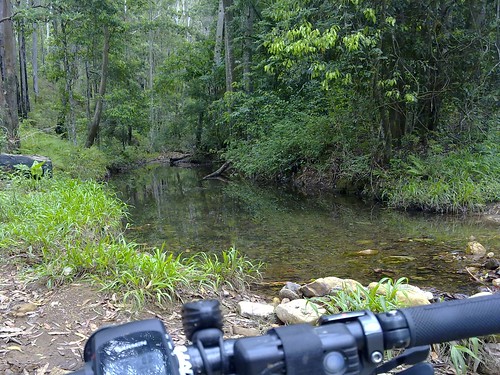I tried to ride to Diana’s Bath today. It’s up in the D’Aguilar Ranges half way between Dayboro and Kilcoy. It’s about a 100km round trip from my place and I would have made it except I ran out of time. But I’m happy with my efforts to get within 5km on my first attempt.

A stand of Hoop Pines and Bunya Pines grow along the upper reaches of the North Pine River in Mount Pleasant.
Surveyor Robert Dixon drew a map of the area in 1842 and noted a “Bunya Scrub Camp” on the upper reaches of the North Pine River (he called it the Eden River). But I think this bunch of trees is even further up the river than Dixon surveyed.

This is the source of the North Pine River. It continues for another kilometre upstream from here in the rainforest. This is the same river that passes within 500m of our house on its way to the sea about 50km downstream.

Byron Creek flows westwards into Reedy Creek and eventually into the Stanley River before it meets the Brisbane River near Esk.
View Diana’s Bath in a larger map
This map gives an idea of how close I got. About 1.5km as the crow flies, but about 5 on the road.
Total climbing: 1903 m
Average temperature:
Total time: 06:50:03
More data































